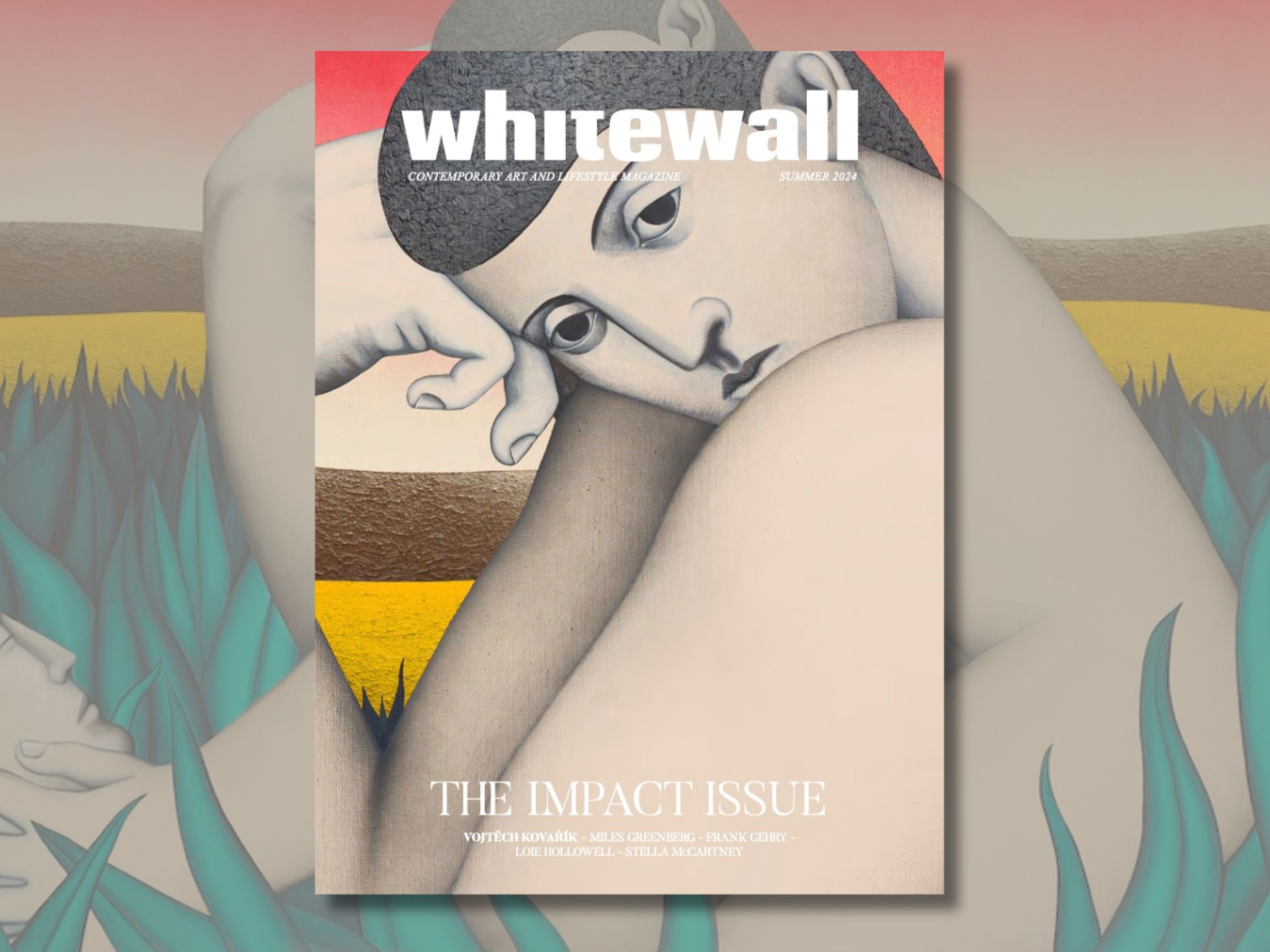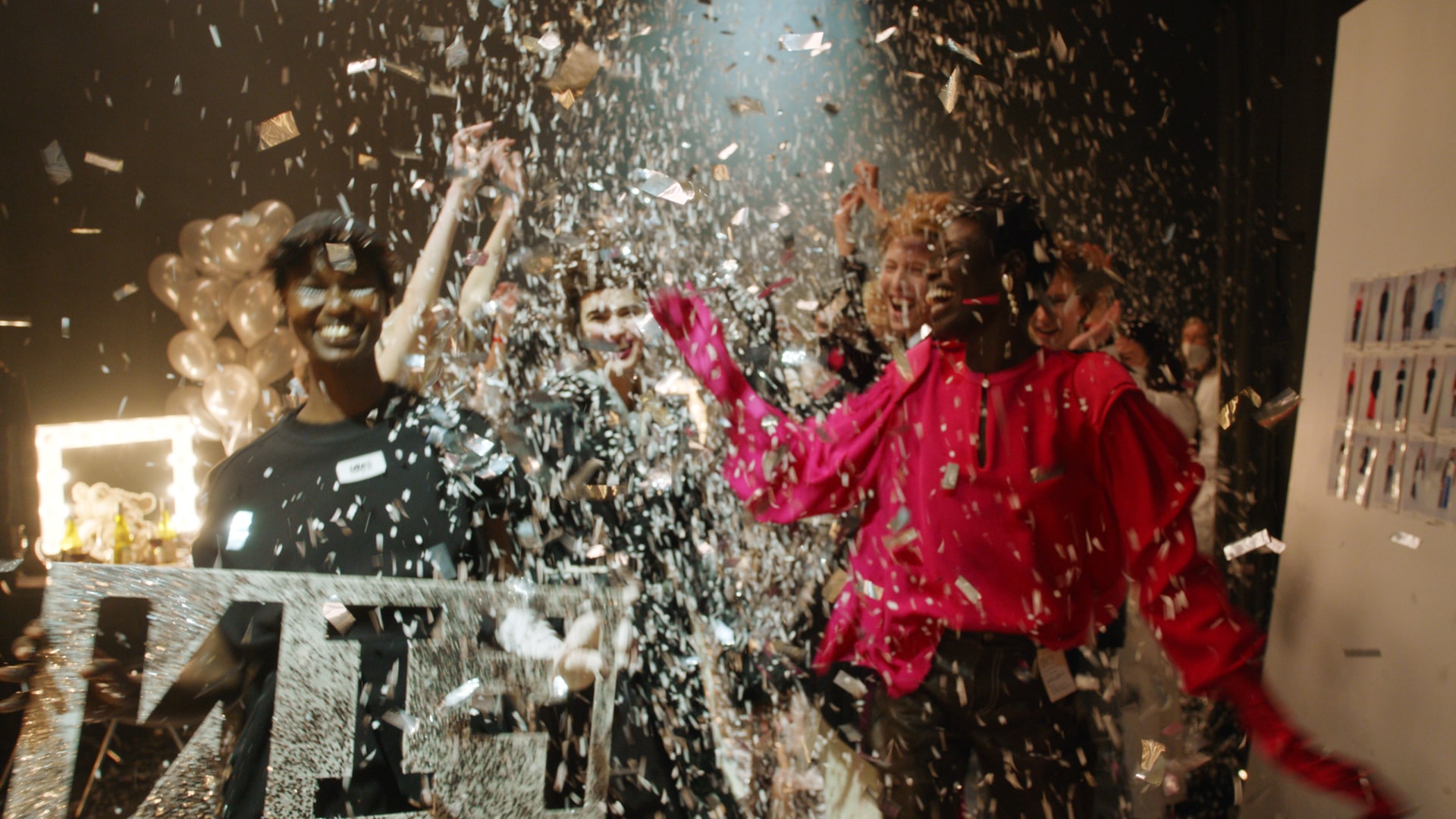Just below the earth’s surface are webs of fungal threads, connected in a network. Strong and adaptable, these roots form organisms that grow into mushrooms, sprouting along the forest floor. In recent years, this natural occurrence has been harnessed for new innovations, specifically to be reproduced in lab settings for the fashion world. As a sustainable alternative to materials like leather, mycelium is neither animal nor plastic, but in its own class of materiality as a biomaterial. Today, it acts as a dependable and customizable option for brands that can’t compromise the luxuries of high quality or aesthetics.
One of mycelium’s earliest adaptors is MycoWorks—a company co-founded by Sophia Wang and Philip Ross in 2007 that specializes in producing a mycelium fabric they named Reishi™. When Whitewall spoke with Wang, she told us how Ross had been working on art projects with mycelium for a decade before MycoWorks’s founding, and what has been critical groundwork for the interest in mycelium materials today.
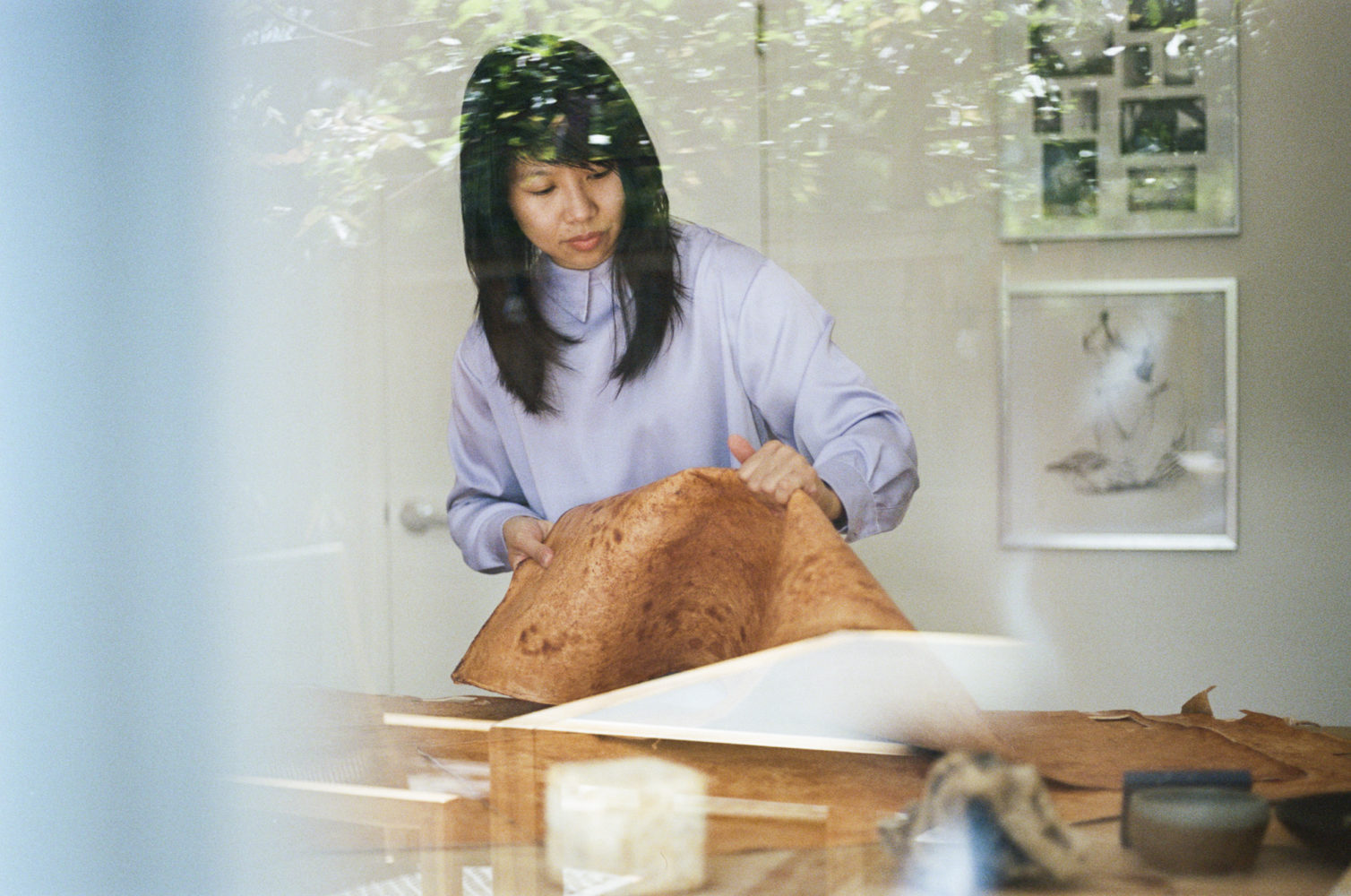 MycoWorks’s Sophia Wang, photo by Carla Tramullas.
MycoWorks’s Sophia Wang, photo by Carla Tramullas.
“We have been helped immensely by shifts in perspective on mushrooms and fungi due to their culinary, medicinal, and cultural appeal,” said Wang. “Along with this, there is a growing curiosity around the capabilities and potential of mycelium, and people are excited by the possibilities. Consumers are increasingly demanding transparency in supply chains and sustainability initiatives, and mycelium materials are well positioned to help brands meet that demand.”
To produce a material like cowhide leather, the supply chain and manufacturing processes can’t offer a high level of control over quality. Yet by working with mycelium, manufacturers can, due to the ability to custom-grow it. Within about a week’s time, mushrooms organically break down plant waste—like twigs, cotton, and sawdust—thanks to a natural biomimicry process, and bind it together for an insulative, biodegradable material. “Mycelium is one of earth’s most powerful agents of environmental regeneration and carbon sequestration,” continued Wang. “We’re using mycelium’s natural capacity to transform plant matter into its own biomass, creating high-value materials from abundant byproducts from the agriculture and lumber industries.”
By fine-tuning sheets of Reishi™ during growth, MycoWorks can deliver a more efficient process that minimizes waste, creates unprecedented design possibilities, and meets the exact specifications of its brand partners. This allows for the customization of fabric factors like strength, thickness, weight, shape, and drape, too. “By controlling dimension, shape, performance features, and more, we offer custom, natural materials through a process that ensures consistent quality and unique capabilities,” Wang added.
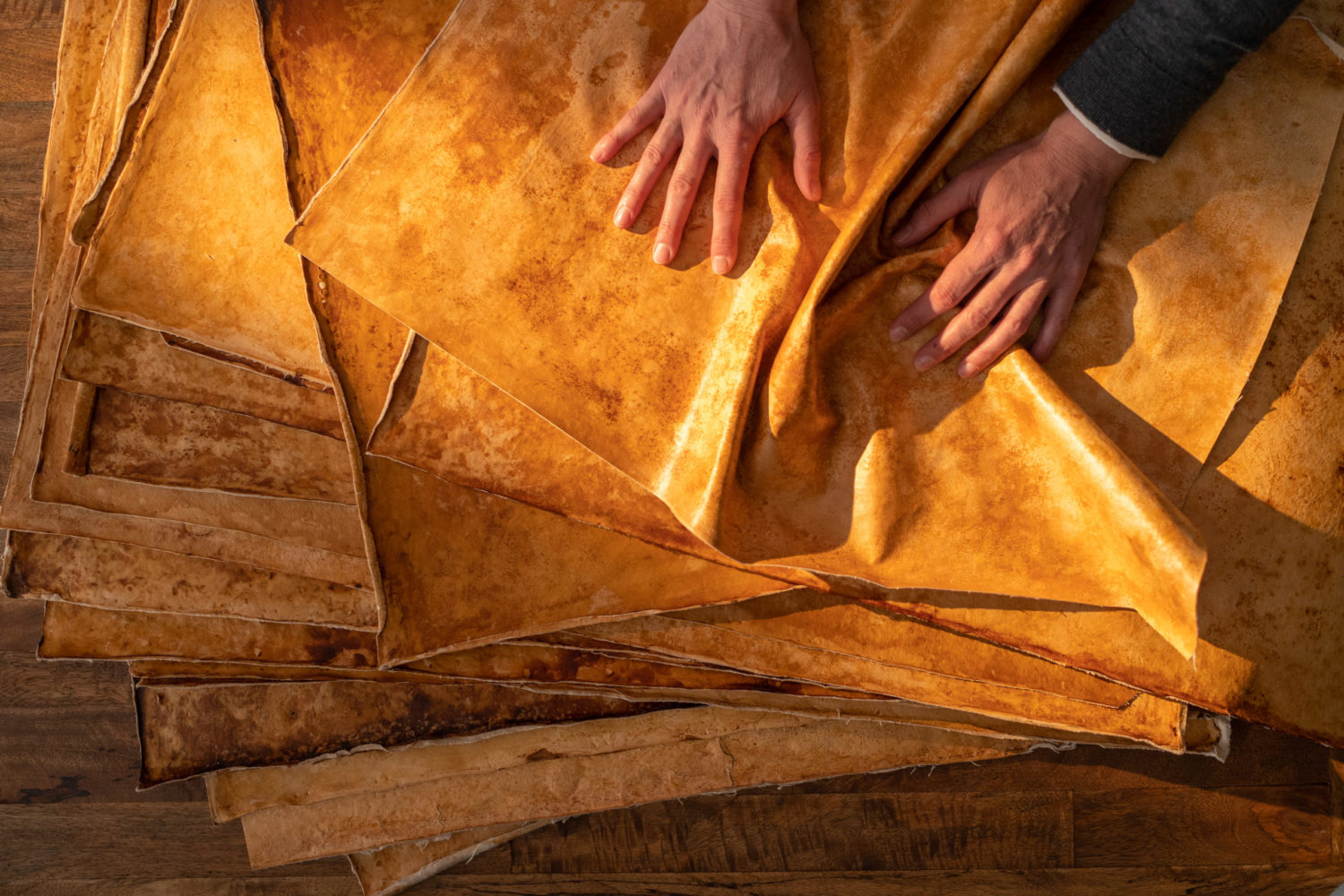 Courtesy of MycoWorks.
Courtesy of MycoWorks.
One of MycoWorks’s first publicized fashion clients was Hermès, who announced its use with a mycelium leather customized to its liking named Sylvania™. Olivier Fournier—the executive vice president of compliance and organizational development at Hermès International, the president of the Fondation d’entreprise Hermès, and a member of the Executive Committee—has been with the maison for over 30 years, overseeing many textile developments, and was excited by reimaging its Victoria travel bag with something sustainable.
“It’s a part of our DNA to explore new materials,” Fournier told Whitewall. “We’ve done it in the past so many times, like in the 1980s with carbon fibers, and will do it in the future. Right now, we are doing it with this new material. It’s a part of the innovation process that we want to integrate into our creations. That’s why it was natural to develop this partnership with MycoWorks to create a new material that’s very natural and very promising. This is a part of the life of a company like Hermès. We always want to bring interesting new materials into creation. It’s very enthusiastic to work with a new touch, a new feeling, a new color. And so is the case with this mycelium material with MycoWorks for our new Sylvania™.”
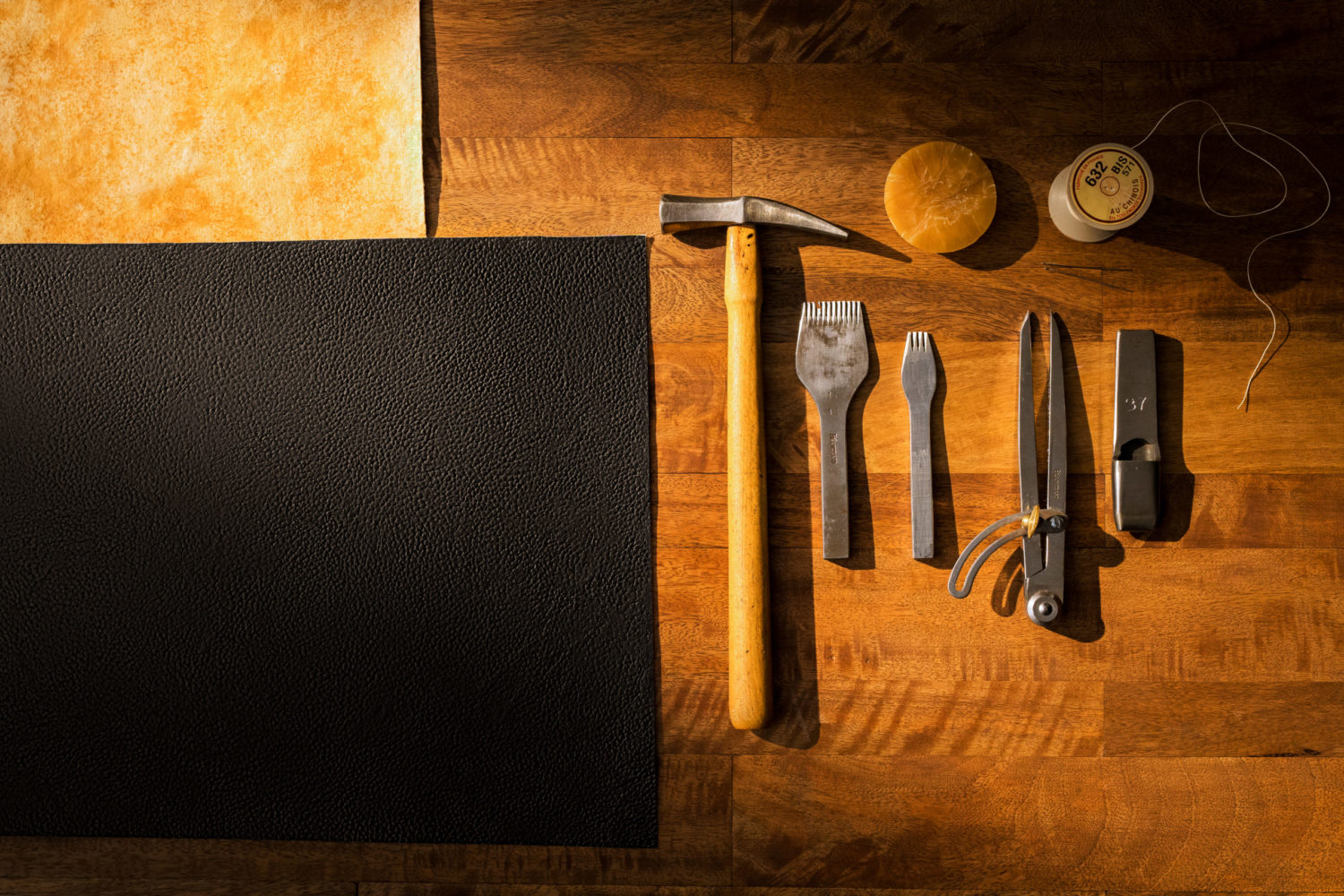 Courtesy of MycoWorks.
Courtesy of MycoWorks.
Stella McCartney—who has notably never worked with leather, feathers, fur, or skins—also launched two garments made from a mycelium leather named Mylo™, created by another mycelium fabric producer named Bolt Threads. Neither the bustier top nor the trousers are available for sale just yet, yet both are making headlines for their ability to trick the material-focused mind and excite the sustainability-concerned senses.
“Working with new technologies is really exciting,” McCartney told Whitewall. “Thinking about the future of our planet and creating a better product for the people of tomorrow is inspiring. If we can get this right, it can really have a huge impact on the planet. It is so exciting that there is now a shift in the industry and people have a level of attention to these innovative materials. There is still a lot of work to be done, as the pieces aren’t commercially available yet, but I see it as a long-term investment. We need more designers helping to encourage this, to take responsibility, and be proud to make changes.”
While mycelium-made products are able to provide an alternative to harmful and wasteful alternatives today, there is still much growth and potential for the material in the fashion world. For now, brands and consumers will not have to sacrifice performance for sustainability, and with broad adoption of mycelium, we can begin to move the needle toward larger change. “We are on the ground floor of what is possible. The materials we’ve created today are an option for any space where soft goods are in use, whether leather, natural fibers, or synthetics,” said Wang. “Across the industry, we hope that every new process, material, or technology any of us develops has long-term environmental resiliency as its starting paradigm. This is the only way we’ll align everyone—makers and consumers—with the goal of becoming better caretakers of our shared, natural resources.”
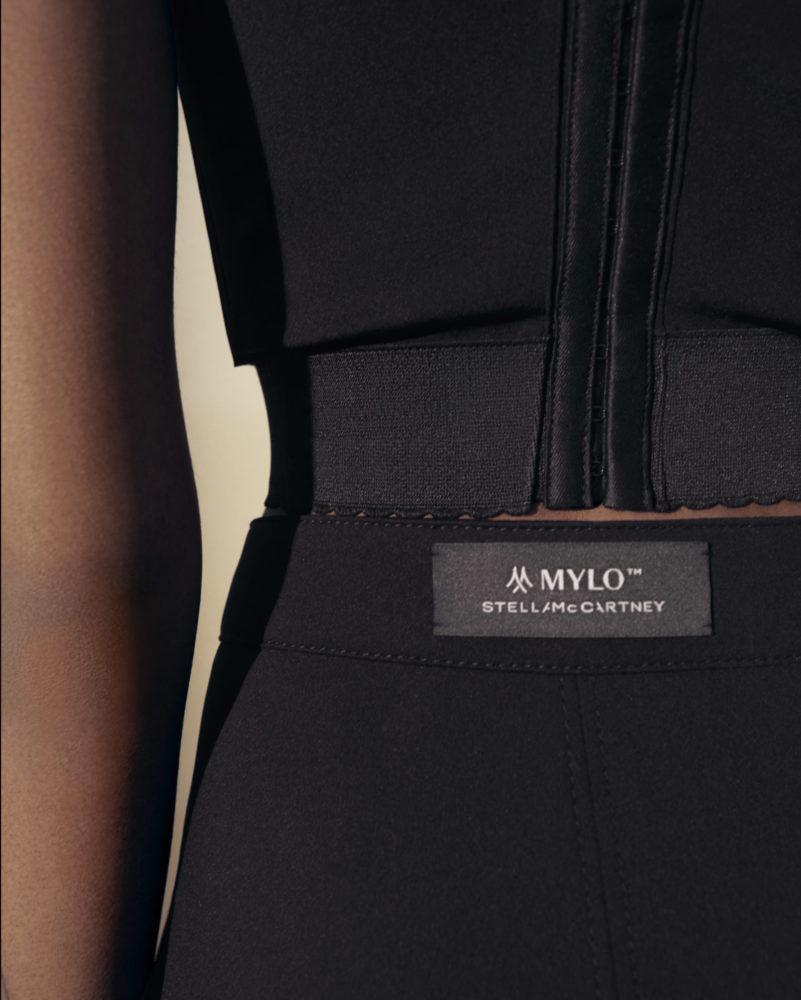 Courtesy of Stella McCartney.
Courtesy of Stella McCartney.








